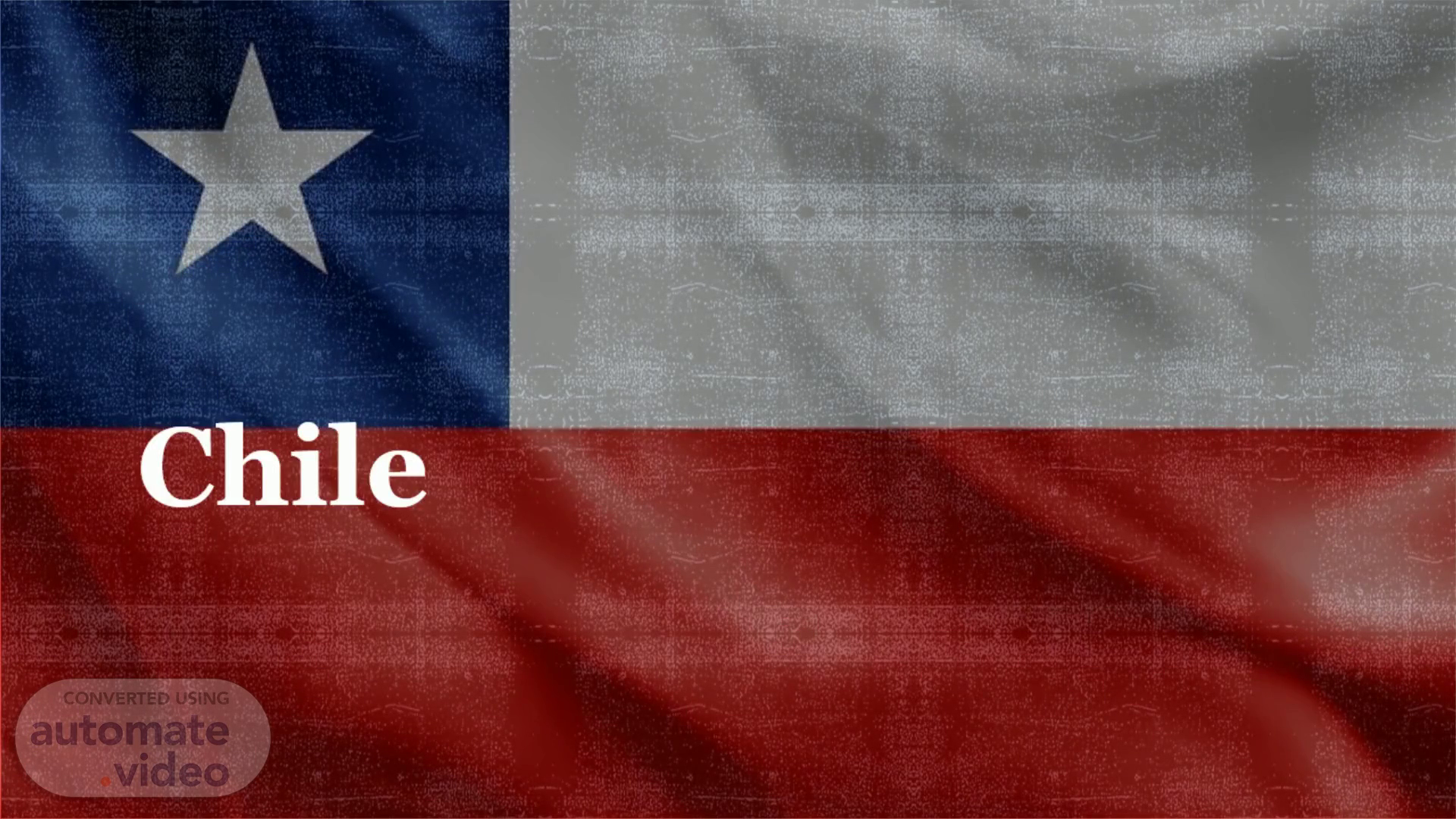Page 1 (0s)
[Audio] My country is Chile. See the source image.
Page 2 (8s)
[Audio] Physical Geography. Geographic features: Long coastlines, low coastal Mts. Southern covered in forests Climate: Hot, dry, and wet winters Absolute/ Relative location: 35.6 degrees S. 71.5 degrees W. Bolivia is to the NE, Pacific Ocean to the W, To the East Argentina. Regions: Divided into 15 regions. The Santiago Metropolitan region is the biggest by population.
Page 3 (52s)
[Audio] Cultural Geography. Official language is Spanish Local's wear chamanto a reversible poncho Majority of the people there is Roman Catholics Traditions- they have a strong heritage, catholic tradition, Holidays– New Years, many fiesta's, festivals Greetings- when 2 women or a man and women greet, they greet each other with a kiss Music- lots of Spanish music the cueca most traditional music and dance Art- a lot of bright colors and visual art Conflict- back then corrupted gov. High unemployment/ poverty Transportation- busses, trains, taxis, cars, air transportation It is rapidly growing, and one of Latin Americas most developed coutries.
Page 4 (1m 50s)
[Audio] Political Geography. What's the structure? It is a Democratic Republic The president is head of gov, and state Current leader Sebastian Pinera is the current president How has he gov changed over time? One of the biggest changes is that before 1973, it was a dictatorship.
Page 5 (2m 16s)
[Audio] Population Geography. Population- About 19 million people Gender Ratio- 97.2 males per 100 females Birth Rate- 12.0 per 1,000 people Death Rate- 6.3 per 1,000 people Ethnicity- Biggest ethnic group is European Literacy Rate- 96.4 [break]% Life expectancy- 80.1 Pop. Issues- birth rate has been low Effects- Population growth has been decreasing.
Page 6 (2m 58s)
[Audio] Environmental Geography. Plant Life- Many evergreen trees. About 5,000 known plant species Animal Life- Most animals include, rodents, bats, deer, HEI- people in chile affect their environment by mining for natural minerals, metals, and oils that sit below the surface of the ground. Ecosystem- biggest ecosystem is scrubland Climate- Warm year round Natural disasters- Volcanoes, earthquakes, tsunamis, forest fire Relief support for natural disasters- During 2010 earthquake many orgs, and countries helped. These are some, recross, and aid from Canada.
Page 7 (3m 47s)
[Audio] Economic Geography. Natural resources- Copper, timber, coal, natural gas and oil Where are they located? Timber in the south, everything else is towards the middle/ North How are they extracted? They cut down trees, and a lot of mining Are they traded? Yes Affect of trade- Many free trade agreements Gdp- 270 billion. Unemployment rate- 11.51. Inflation Rate- 3.05. Interest Rate 2.75. Minimum Wage- 265,000 pesos..
Page 8 (4m 36s)
[Audio] Economics continued. 1 world country. Rapidly growing, and second richest in SA They are about in the middle of developing, and developed What level of economic activity? Primary. They do a lot of mining, tree cutting, and a lot with natural resources.
Page 9 (5m 1s)
[Audio] Sources.. Sources. https://www.cia.gov/search/?q=Chile&site=CIA&output=xml_no_dtd&client=CIA&myAction=%2Fsearch&proxystylesheet=CIA&submitMethod=get https://www.worldatlas.com/amp/articles/regions-of-chile.html https://www.britannica.com/place/Chile https://www.britannica.com/event/War-of-the-Pacific https://m.wikidata.org/wiki/Q2737415 https://www.reachtoteachrecruiting.com/guides/guide-to-chile-home-html/transportation-in-chile/ https://www.oecd-ilibrary.org/what-s-next-on-chile-s-growth-and-development-agenda_5j90mqsr0pg0.pdf?itemId=%2Fcontent%2Fcomponent%2F9789264288379-6-en&mimeType=pdf.
